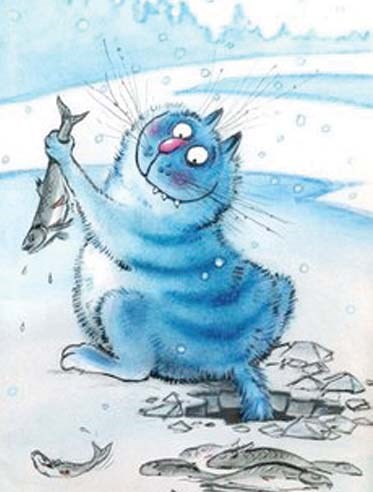Welcome to Week CXCIX of ‘Fishing Parkland Shorelines’. Like most of us I am a novice fisherman, loving to fish, but far from an expert. In the following weeks I’ll attempt to give those anglers who love to fish but just don’t have access to a boat, a look at some of the options in the Yorkton area where you can fish from shore, and hopefully catch some fish.
There must be a connection between Russian people and their cats.
At least it seems that way to someone who collects fishing related postcards.
For the most part my small, humble collection focuses on postcards reflecting real fishing. That is to say the cards which grab me most have someone in them fishing.
Ideally the depiction is either a vintage photograph, anything from the 1950s seems to grab me, and earlier becomes intriguing since the cards are then older than myself.
A good postcard based on some artwork of fishing is a definite attraction too.
While not a regular visitor to the Godfrey Dean Art Gallery, I should be as I do enjoy art.
But like any collection mine tends to go off on tangents.
And that brings me to the world of Russia and its apparent fascination with cats.
There is another type of fishing postcard which has snuck ever so subtly into my collection, those which reflect a certain whimsy related to fishing.
Now there are hundreds of humour fishing postcards about the big one that got away and while they can elicit a smile, those generally cartoon-style efforts just don’t cut it for me in terms of wanting them in my book.
No in terms of whimsy I seek something a bit more fanciful I suppose.
My first Russian cat art discovery came when I happened upon a few postcards on eBay based on the work of Rumyanzev V. March.
March’s works are quite diverse, although I’ve found only five which has the whimsical cats of his world fishing.
March was born in St. Petersburg in 1957, and began drawing at the age of four. He attended the Serov Art School.
The postcards in this case are oversize to those common in Canada, which initially I was disappointed in because they didn’t seem ‘to fit’ into the rest of the collection, but I soon came to accept that it was simply adding diversity to the visual aspect of thumbing through my books.
It was March’s work which led me to further discoveries of Russian art and fishing cats.
Next came the postcards based on the art of Irinua Zenyuk.
Zenyuk’s works are almost sure to bring a smile to anyone’s face.
Most feature wonderfully chubby, anthropomorphic blue cats.
From there the subject matter crosses day-to-day life. I have seen online photos of works with the blue cats playing chess (I really kind of want that one even though it’s not about fishing), milking a cow, tobogganing, and of course a few where the whimsical cats are fishing.
While Zenyuk’s postcards are often found on eBay, I had little success in finding the artist, at least via my limited Internet search skills.
And a recent discovery in the style is postcards based on the art of Alexander Maskaev.
Maskaev was born in 1959, and received professional education at the Tyumen Art School. He worked as a teacher in Nizhnevartovsk, and was a member of the Professional Union of artists of Russia.
He currently lives in the Moscow region, and his works are in private collections in Russia, Japan, Italy, Germany and other countries
Maskaev’s works are reflective of what I would term fairy-tale work, with characters including goblins and the familiar Russian Baba Yaga seen.
But the main character, seen over and over in many works is an orange-furred cat, often seen in the company of some wonderful little mouse creatures.
“His works are all hand painted childish worlds always usually accompanied by an orange cat, but is also fond of goblins and mice, but the cat is the star in his paintings. His paintings often have great aspect of welcoming and quiet, secure sites, inviting you to stay in them for a while. The clothes that draw them are taken from the typical fantasy tales Grimm brothers, with large buckles and boots with pointed ends. The elves or dwarves are a fundamental part of his works, like mice that always seem to be busy with the cat. Bruges and cabins light by the fire and children everywhere, bearded men, and the cat of course always the orange cat, its child labor was exquisite in his time and now in 2011 still continues to impress and gladdening sight of observing their works. And is that his paintings have that something that takes you back to childhood and catch you damned in those fantastic worlds of fantasy,” detailed www.pinterest.com
As with the other artist’s work the cat is anthropomorphic. It appears wise, kind, with clearly human characteristics.
Maskaev’s works cover a range of ’snapshot’ views into this fairy-tale world, and several have the cat, or associated characters with a rod in-hand fishing.
The pieces are full of charm and yes that word whimsy.




